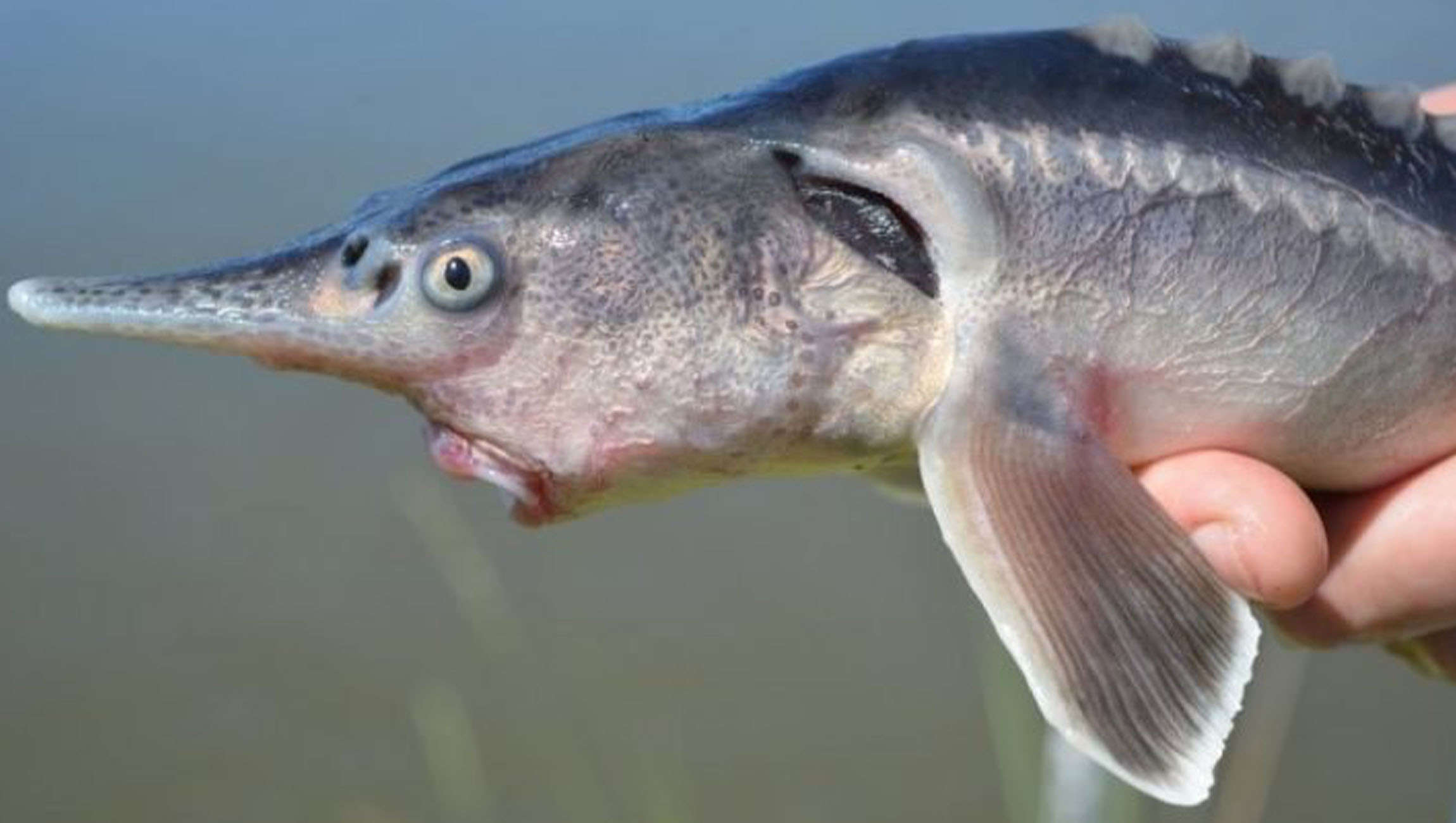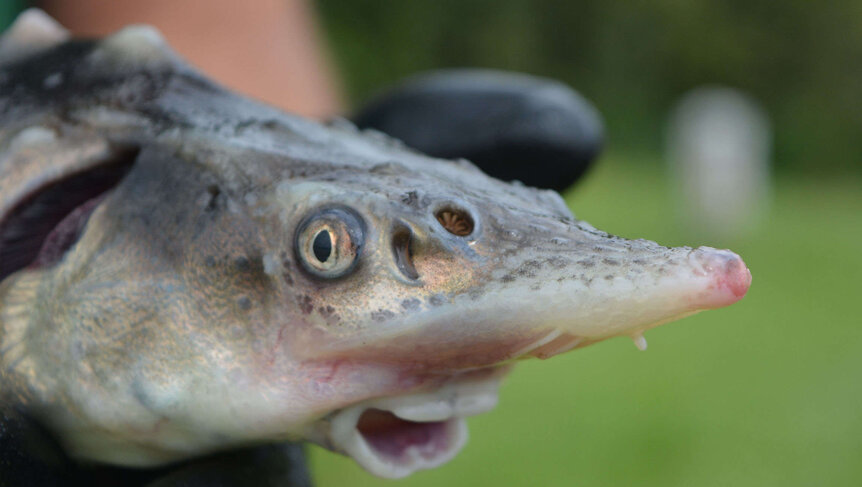Create a free profile to get unlimited access to exclusive videos, sweepstakes, and more!
Freaky hybrid fish is an accidental DNA mashup, because scientists went there without even knowing they were going there

Spider-Man and the sturddlefish have something in common. Even though one is not a superhero, both were lab accidents that should have never existed.
Sturddlefish ended up being the accidental hybrid offspring that spawned from an attempt to breed the endangered Russian sturgeon. Atilla Mozsár, a senior research fellow at the Institute for Fisheries and Aquaculture in Hungary, and his team had no idea what would happen when they tried to artificially fertilize sturgeon eggs with American paddlefish sperm. Gynogenesis means the sturgeon needs sperm to reproduce—but ditches their DNA. This is why the scientists were positively shocked when its eggs hatched into bizarre sturgeon-paddlefish hybrids now known as sturddlefish.
It was supposed to be impossible. Russian Sturgeon and American paddlefish live on opposite sides of the world. The evolution of the two ancient species had diverged 184 million years ago, which might seem like ages to us, but is really nothing for fish that evolve so slowly. This had the scientists thinking that there was no chance of genetic compatibility. Mozsár’s team felt nothing weird would happen by using paddlefish sperm to boost the population numbers of the sturgeon. Instead, they unknowingly created a monster.
“I think there were several factors at work that made this possible,” aquatic ecologist Solomon David of Nicholls State University in Louisiana, who was not involved in the study, told SYFY WIRE. “Sturgeons and paddlefish have a lot of genetic material to work with (if you look at their combined chromosome numbers), and are also close branches to each other on the evolutionary tree, and have much slower evolutionary rates than we do. These factors were likely reasons why this hybrid cross was viable.”
So no, if you see any comments about lizard men or Japanese experiments that merge human and animal DNA, that is definitely not what happened here.
This is the first time that a species from the family Acipenseridae has produced successful offspring with one belonging to the family Polyodontidae. The team of scientists, who recently published their findings in Genes, were aware that hybridization was possible among acipenserid species, but not that it was possible between acipensarids and polyondontids. They now believe that the ability of such distant species to reproduce as successfully as if the paddlefish had bred with another paddlefish could be hidden in the duplication of their genome that happened when dinosaurs were trampling the earth. There are few morphological similarities between the Russian sturgeon and the American paddlefish, which is the only paddlefish left on Earth since the Chinese paddlefish was declared extinct.
“There aren’t a lot of obvious examples of convergent evolution between these fishes,” David said. “They share characteristics common throughout the order Acipenseriformes, for example, primarily cartilaginous skeletons, electroreception, and shark-like tails (i.e. heterocercal, with the upper part of the tail fin longer than the lower part). However, their feeding mechanisms are very different; sturgeons are primarily bottom-feeders, vacuuming up invertebrates and small fish from the substrate. Paddlefish, on the other hand, are primarily plankton feeders, using their long paddle-shaped snout to detect the tiny animals in the water column and filter them out using their big mouths and sieve-like gill structures.”
About a hundred sturddlefish are now the unintended results of a breeding attempt that veered into the realm of science fiction. The amounts of DNA inherited from each parent vary. Some progeny have dominant sturgeon genes with a few traces of paddlefish characteristics, while others are perfect examples of an even cross between the two, kind of like a live version of that computer app that used to tell you what hypothetical children between two people would look like. There are no plans to breed any more of them. They are assumed to be sterile, though you never know. Those ligers on Tiger King were also passed off as sterile until ti-ligers and li-ligers appeared.
“It seems most likely that these hybrids are sterile, but inspection of their reproductive development as they grow would help determine this,” Daivid said. “It’s important that these animals aren’t released into the wild. The Sturddlefish is certainly a surprising curiosity of ichthyology and evolutionary biology, but they’ll remain safely in the lab and don’t seem to have the capabilities to become invasive.”
For now, the Russian sturgeon is just going to have to find a less compatible mate.




























